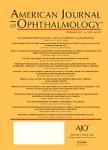版权所有:内蒙古大学图书馆 技术提供:维普资讯• 智图
内蒙古自治区呼和浩特市赛罕区大学西街235号 邮编: 010021

作者机构:NEI Immunol Lab NIH Bethesda MD 20892 USA
出 版 物:《AMERICAN JOURNAL OF OPHTHALMOLOGY》 (美国眼科学杂志)
年 卷 期:2001年第131卷第3期
页 面:309-313页
核心收录:
学科分类:1002[医学-临床医学] 100212[医学-眼科学] 10[医学]
基 金:National Eye Institute NEI (Z01EY000373)
主 题:角膜疾病/诊断 角膜疾病/人种学 角膜疾病/病毒学 眼感染 病毒性/诊断 眼感染 病毒性/人种学 眼感染 病毒性/病毒学 HTLV-Ⅰ抗体/分析 人类嗜T淋巴细胞病毒1型/免疫学 人类嗜T淋巴细胞病毒1型/分离和提纯 高丙种球蛋白血症/免疫学 高丙种球蛋白血症/病毒学 免疫球蛋白G/免疫学 牙买加/流行病学 轻截瘫 热带痉挛性/诊断 轻截瘫 热带痉挛性/人种学 轻截瘫 热带痉挛性/病毒学 视敏度 成年人 女(雌)性 人类 男(雄)性 中年人
摘 要:PURPOSE: Human T-cell lymphotrophic virus type 1 is a RNA retrovirus that primarily affects CD4+ T-cells. Human T-cell lymphotrophic virus type 1 infection is the established cause of adult T-cell leukemia/lymphoma, an aggressive malignancy of CD4+ T-cells, and two non-neoplastic conditions: human T-cell lymphotrophic virus type 1-associated myelopathy/tropical spastic paraparesis and human T-cell lymphotrophic virus type 1 uveitis. Other reported ophthalmic manifestations of human T-cell lymphotrophic virus type I infection include lymphomatous and leukemic infiltrates in the eye and ocular adnexa in patients with adult T-cell leukemia/lymphoma, retinal pigmentary degeneration, and neuro-ophthalmic disorders in patients with human T-cell lymphotrophic virus type 1-associated myelopathy/tropical spastic paraparesis and keratoconjunctivitis sicca, episcleritis, and sclerouveitis in asymptomatic human T-cell lymphotrophic virus type I carriers. This report describes the ocular findings in three Jamaican patients with human T-cell lymphotrophic virus type 1 infection and adult T-cell leukemia/lymphoma. METHODS: The clinical records of three patients with human T-cell lymphotrophic virus type 1 infection and adult T-cell leukemia/lymphoma examined at the National Eye Institute were reviewed. Each patient had one or more complete ophthalmic evaluations. RESULTS: All three patients had corneal abnormalities, including corneal haze and central opacities with thinning;bilateral immunoprotein keratopathy;and peripheral corneal thinning, scarring, and neovascularization. All three patients had elevated serum immunoglobulin levels. CONCLUSIONS: We believe that the novel corneal findings in these patients are most likely a consequence of the hypergammaglobulinemia induced by the human T-cell lymphotrophic virus type 1 infection or the T-cell malignancy. (Am J Ophthalmol 2001;131:309-313. (C) 2001 by Elsevier Science Inc. All rights reserved.).